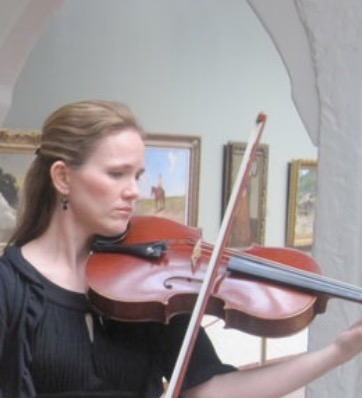
On Sunday, February 26, the Utah Viola Society is proud to present our guests Caitlyn Valovick-Moore, flute and piccolo, and David Yavornitzky, double-bass, in a performance of the Erwin Schuloff Concertino for Flute, Viola, and Double-bass.
Erwin Schuloff (1894-1942) was a Czechoslovakian composer and pianist. He showed musical talent from a young age, and at age 10 Antonin Dvorak recommended him for study at the Prague Conservatory where he studied composition and piano. He continued his musical education in Vienna, studying composition with Max Reger. (He later studied briefly with Claude Debussy, and though their teacher-student relationship was short lived, one can hear the influence of Debussy’s music in Schuloff’s style.)
Schuloff’s compositional career is generally divided into four periods. The Concertino, written in 1925, falls in the middle of his third period which is marked by the influence of Debussy, his exploration of jazz, and interest in folk music. Schuloff’s synthesis of these styles can be heard in the Concertino. It was premiered in 1926 by a group comprised of the flautist for whom the piece was written, Hermann Wilber Drauber, and the Hindemith brothers, Paul Hindemith playing viola, and his brother Rudolph Hindemith playing double bass.
Schuloff’s later compositional period is known as “Socialist Realism” and included a cantata setting of the Communist Manifesto. His compositions were labeled “degenerate” by the Nazi party, and he was no longer allowed to perform in Germany. He applied for citizenship to the Soviet Union, but before he could leave Czechoslovakia, he was arrested and sent to a concentration camp in Wülzberg, Bavaria, where he died of tuberculosis in 1942.

The Concertino is in four movements: Andante con Moto, Furiant, Andante, and Rondino. Throughout the trio one hears the influence of folk music, the freedom and counterpoint of jazz, and the textures of Debussy. The first movement opens with a viola bass ostinato under an exotic-sounding flute melody reminiscent of Debussy. The second movement is a folksy and rustic dance in 5/8 time. The third movement has some of the most interesting counter point of the piece, with each instrument getting a turn at a Ruthenian folk song, with the accompanying instruments dovetailing the melody. The final movement is another folk dance and includes a piccolo melody described by Schuloff as a “Moravian seller of shepherd’s flutes in the streets of Prague.”
We’ve enjoyed putting together the Schuloff Concertino. Caitlyn, David, and I agree that the most interesting thing about the trio is the range, reaching at times a 4-octave span between the bass and piccolo, with the viola sandwiched in between. One would think that working with such a large range would be challenging, but Schuloff’s writing for each instrument is so idiomatic that each voice works well independently and yet pairs beautifully with the others. We love that Schuloff’s compositional voice is unique; while he’s been influenced by many types of music and compositional techniques, his synthesis of those influences creates a very personal style. We also enjoy how he writes counterpoint. The melodies are very clearly written, but the accompanying lines help take the listener in a different direction.
My favorite part about working on the trio has been getting together with my wonderful Utah Symphony and University of Utah colleagues Caitlyn and David. Playing chamber music is a highlight and delight for us, but I am deeply honored to be able to perform with such high caliber musicians as Caitlyn and David. In case you miss this performance, you can catch us again on March 26 at 7 pm in Libby Gardner Hall for a Sundays at 7 program.

Utah Viola Society Spring Recital
Sunday, February 26, 3pm
University of Utah, Dumke Recital Hall






